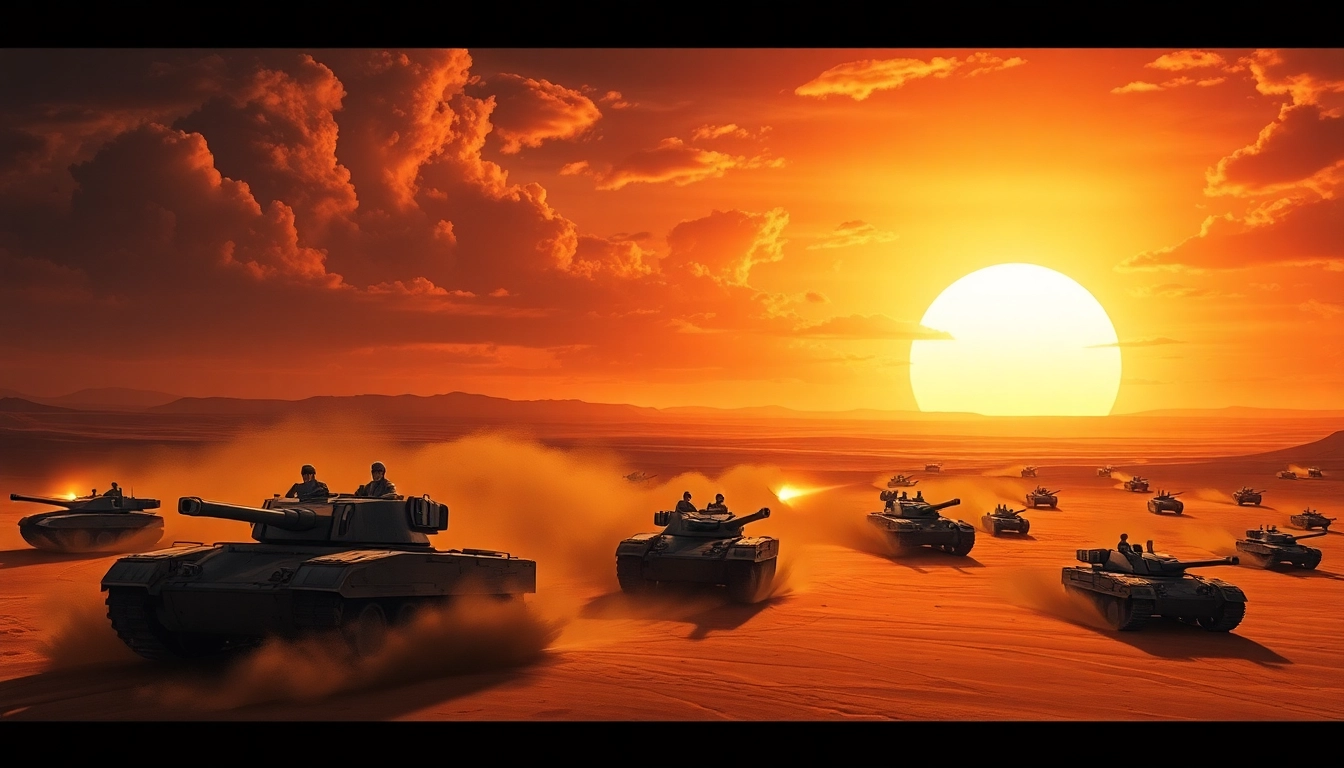Introduction to the Dune 2 Game
The dune 2 game represents a pivotal moment in the history of real-time strategy (RTS) gaming. Released originally in 1992, it has paved the way for numerous successors and has had an enduring impact on the gaming landscape. In this article, we will delve into the game’s mechanics, strategies for victory, and its lasting legacy within the gaming culture, all while equipping new players with essential tips to enhance their experience.
What is the Dune 2 Game?
Dune 2, officially titled “Dune II: The Building of a Dynasty,” is a seminal RTS game set in the universe created by Frank Herbert in his Dune novels. Unlike its predecessor, “Dune,” which was an adventure game, Dune 2 introduced players to the mechanics of base building, resource management, and direct control of units in real time. Players choose to play as one of three factions: the noble Atreides, the merciless Harkonnen, or the cunning Ordos, each with unique units, buildings, and technologies. The game’s primary goal is to harvest the precious spice melange from the deserts of Arrakis and to defeat rival houses while navigating the game’s intricate mechanics.
A Brief History of Dune 2
Dune 2 was developed by Westwood Studios and released for MS-DOS. It was groundbreaking in its introduction of a mouse-driven interface for unit selection and command execution in an RTS context. In a time when most games relied heavily on keyboard commands, Dune 2’s intuitive controls made it accessible to a broader audience. The game set new standards for graphics, story depth, and the incorporation of resource management into gameplay. Dune 2 laid the foundation for future RTS classics such as Command & Conquer and StarCraft, cementing its legacy as one of the most influential video games of its time.
Importance of Dune 2 in Gaming
The impact of Dune 2 cannot be overstated; it essentially defined the RTS genre. It introduced key features such as fog of war, varied unit types, and the need for strategic resource management, which have become staples in games that followed. Its emphasis on tactical deployment and battlefield control set the stage for complex gameplay and multiplayer modes. By blending rich narrative elements with strategic gameplay, Dune 2 has influenced countless other games and developers. Even today, its principles are seen in both modern and retro gaming communities, highlighting its timelessness and relevance.
Game Mechanics and Features
Understanding Resource Management
At the heart of Dune 2’s gameplay is the management of resources. The primary resource in the game is the spice, which is crucial for constructing buildings and producing units. Players must strategically deploy Harvesters to extract spice while protecting them from sandworms and enemy attacks. The economies of each faction differ slightly, requiring players to adapt their strategies based on their chosen house’s strengths and weaknesses. For example, the Atreides may utilize advanced technology to bolster defenses, while Harkonnen players can focus on brute force approaches.
Combat Systems Explained
The combat system in Dune 2 is richly layered, with unit types categorized into infantry, vehicles, and air units. Each unit comes with distinct strengths and weaknesses, requiring players to strategically compose their armies. The game’s combat is enhanced by unit upgrades, which allow for more powerful capabilities as players advance. Understanding the rock-paper-scissors dynamic of unit types—where air units can dominate ground units, but are vulnerable to specific anti-air units—adds a tactical layer to the gameplay.
Unit Types and Strategies
Each faction in Dune 2 offers diverse unit types, leading to various strategies that players can use to outmanoeuvre their opponents. The Atreides boast advanced infantry and defensive structures, making them formidable in prolonged battles. The Harkonnen excel in brute force with heavy tanks, suited for aggressive tactics. Meanwhile, the Ordos are adept in sabotage and stealth, using fast-moving units for hit-and-run tactics. Understanding these unit dynamics and appropriately adapting strategies is critical for success in Dune 2’s competitive environment.
Winning Strategies for the Dune 2 Game
Effective Base Building Techniques
Base building in Dune 2 is vital for sustaining your economy and military. A well-structured base includes a balanced mix of production facilities, defenses, and resource collectors. Players should prioritize constructing refineries close to spice fields to maximize harvesting efficiency while fortifying their base with defenses against enemy incursions. Strategic placement of buildings can also impact unit deployment capabilities; positioning military units near the front lines and defenses at choke points can create a robust defensive posture.
Unit Composition and Counters
A solid unit composition is key for both offense and defense in Dune 2. Players must learn to balance their forces to create a versatile army capable of responding to various threats. Utilizing a mix of units tailored to exploit opponent weaknesses—such as employing rocketry against infantry or combining tanks with air support against heavier fortifications—can be game-changing. Additionally, players should scout their opponents to anticipate their unit composition and adjust their strategies accordingly.
Map Control and Tactical Movements
Map awareness and control are critical aspects of success in Dune 2. Players must carefully navigate the terrain of Arrakis, utilizing its features to gain the upper hand. Controlling choke points can limit enemy movement and give players strategic advantages. Utilizing scout units to gather intelligence on enemy positions enables players to launch focused attacks or conduct effective defenses. Overall, understanding the battlefield and manipulating terrain to your advantage can significantly impact the outcome of skirmishes.
Tips for New Players
Getting Started with the Dune 2 Game
For newcomers to Dune 2, starting out can be intimidating due to the depth of its mechanics. However, a few foundational strategies can ease the transition into this classic RTS. First, familiarize yourself with the unique traits of each faction through practice games. Establish a solid economy early on by prioritizing spice collection while slowly building up defenses. This foundational knowledge will lend itself to an understanding of the intricacies of the game as you delve deeper.
Common Pitfalls to Avoid
New players often fall into various traps that can hinder their progress in Dune 2. A common mistake is neglecting defense while aggressively expanding. While gathering spice is critical, failing to protect your harvesters with appropriate military support can lead to devastating losses. Additionally, overcommitting to a single type of unit without diversifying your forces can leave you vulnerable to counter-attacks. Finally, new players may overlook the importance of map awareness, which can lead to being blindsided by enemy forces.
Resources for Further Learning
To deepen your understanding and strategy in Dune 2, a wealth of resources are available. Online forums and communities centered around classic games offer invaluable insights from seasoned players. Watching gameplay videos on platforms like YouTube provides visual learning, showcasing strategies and techniques that can be emulated. Additionally, reading strategy guides can offer comprehensive overviews of unit comparisons, optimal build orders, and advanced tactics tailored to your chosen faction.
The Legacy of Dune 2 in Gaming Culture
Influence on the RTS Genre
Many consider Dune 2 to be a cornerstone of the RTS genre, inspiring numerous titles that followed it. Its unique blend of strategy, resource management, and real-time gameplay established essential conventions that later games would adopt. Franchises like Command & Conquer borrowed heavily from Dune 2’s core mechanics, further popularizing the RTS format and leading to the genre’s expansion during the late 1990s and early 2000s.
Modern Inspirations and Remakes
The resurgence of interest in Dune 2’s gameplay principles is exemplified by modern remakes and inspirations. Games like “Dune: Spice Wars” pay homage to Dune 2 while introducing contemporary aesthetics and mechanics. These modern adaptations continue to honor the legacy of the original while attracting a new generation of players to the Dune universe. The essence of strategy and resource management remains at the forefront, reminding us of Dune 2’s foundational role in the evolution of gaming.
Community and Fanbase Growth
The community surrounding Dune 2 remains vibrant and passionate, celebrating not only the original game but also the narrative and universe crafted by Frank Herbert. Fan-driven events, mods, and discussions have continued to invigorate interest in the game, showcasing its timelessness. Whether through speedrunning challenges, online multiplayer matches, or engaging in the ongoing lore, the Dune 2 community exemplifies the loyalty and affection fans hold for this classic game.



